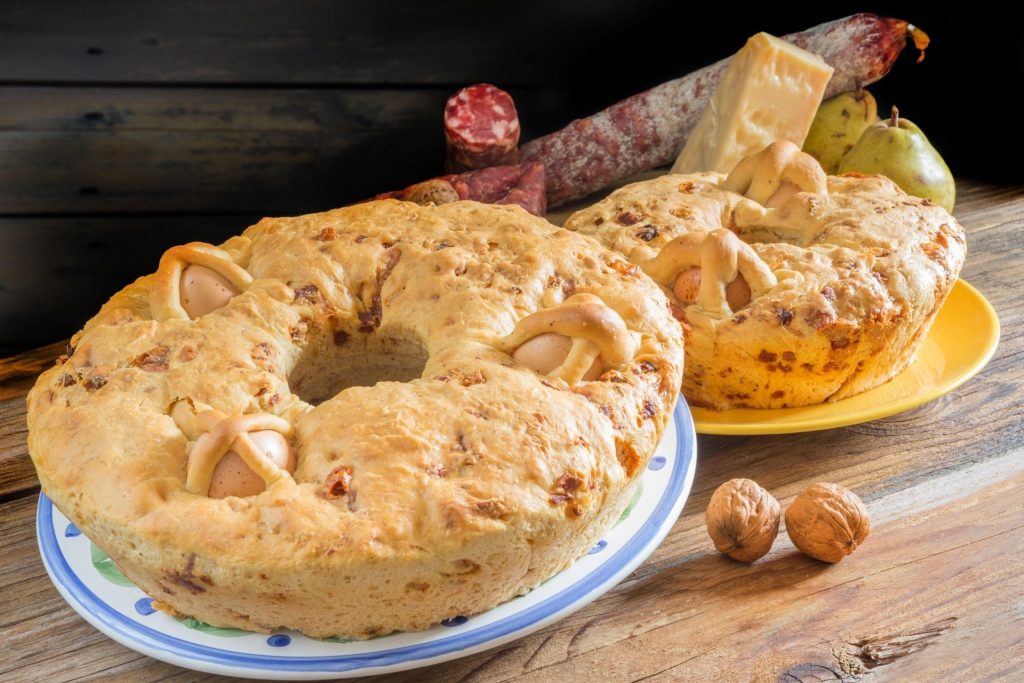The Presepe is a beloved and longstanding tradition in Italy. It originated in the 13th century and has become an integral part of Italian Christmas celebrations.
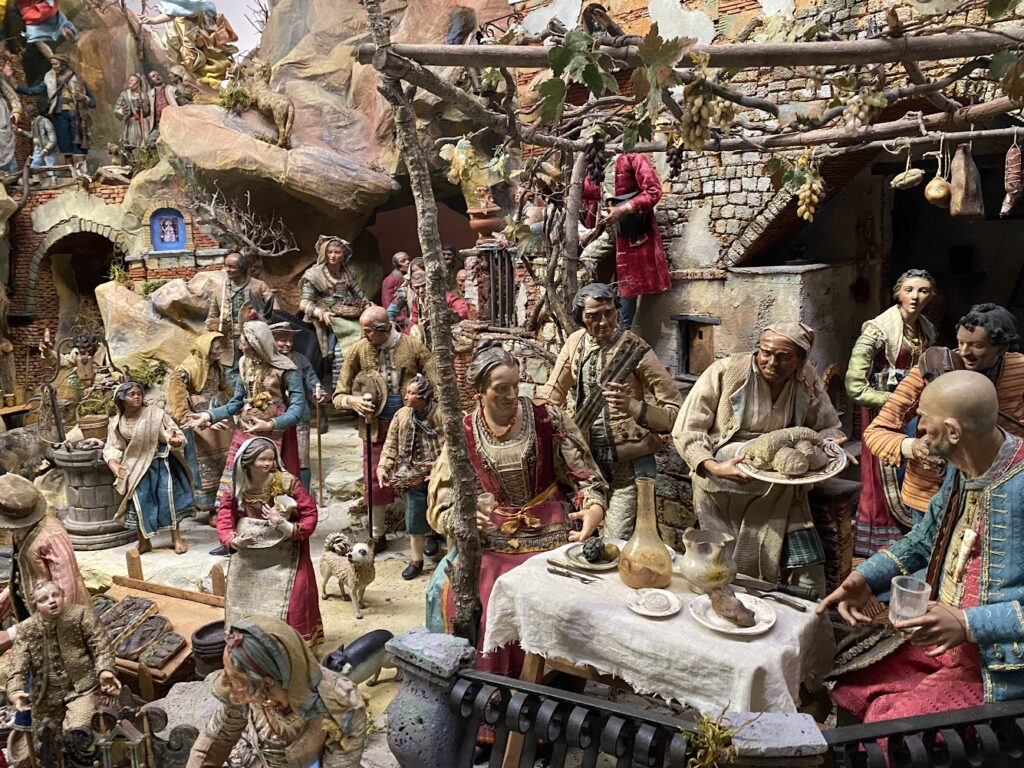 Presepe, also known as cribs or Nativity Scenes, can be found in homes, churches, and public squares across Italy during the holiday season. They typically feature the holy family – Mary, Joseph, and baby Jesus – along with other figures such as shepherds, kings, and animals. The figures, often made of terracotta or wood, are meticulously hand-painted with intricate details.
Presepe, also known as cribs or Nativity Scenes, can be found in homes, churches, and public squares across Italy during the holiday season. They typically feature the holy family – Mary, Joseph, and baby Jesus – along with other figures such as shepherds, kings, and animals. The figures, often made of terracotta or wood, are meticulously hand-painted with intricate details.
The creation of the Presepe dates back to St. Francis of Assisi, who is said to have created the first Nativity Scene in 1223 in an effort to bring the story of the birth of Jesus to life for the common people. Since then, the tradition has continued to evolve and expand, with some Presepe featuring hundreds of figures and elaborate settings.
In addition to the traditional Presepe, there are also unique variations such as the Presepe Napoletano, which originated in Naples and features figurines dressed in traditional Neapolitan clothing, and the “Presepe vivente“, an outdoor Nativity Scene, features actors portraying the main characters of the presepe.
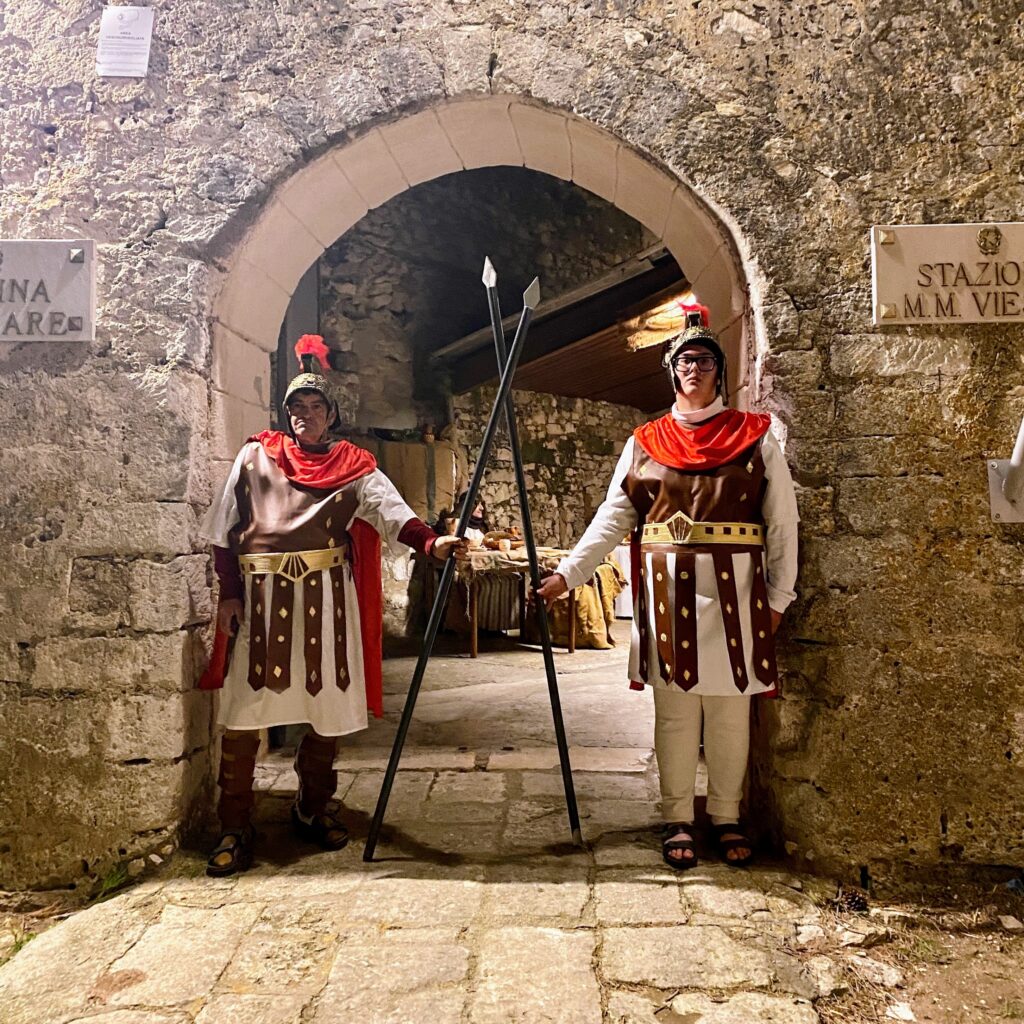
The “Presepe Vivente” in the Castle of Vieste
When they first appeared in the fifteenth century, the first representations of the Nativity were certainly not the traditional “pastori,” but wooden statues, almost life-size and not jointed. There was not much room for either the expressiveness of the figures or their interchangeability. Placement was always in churches.
The first terracotta figurines were made in the 1500s. In the 1600s the body of the statuettes, the “shepherds,” was made with an iron wire core covered with tow, and this allowed the statues to take on more plastic poses, while the arms, legs and head were made of wood or terracotta and dressed in cloth clothes.
Today much of the traditional statuettes are realized in terracotta, while around Lecce the statuettes are made of papier-mâché.
The Neapolitan presepe
The Neapolitan presepe is a beloved and unique tradition in Naples, Italy. Originating in the 17th century, the presepe has evolved over the centuries to become a beloved and integral part of Christmas celebrations in the city.
This tradition soon spread throughout the city, and by the 18th century, the presepe had become a popular form of entertainment during the Christmas season.
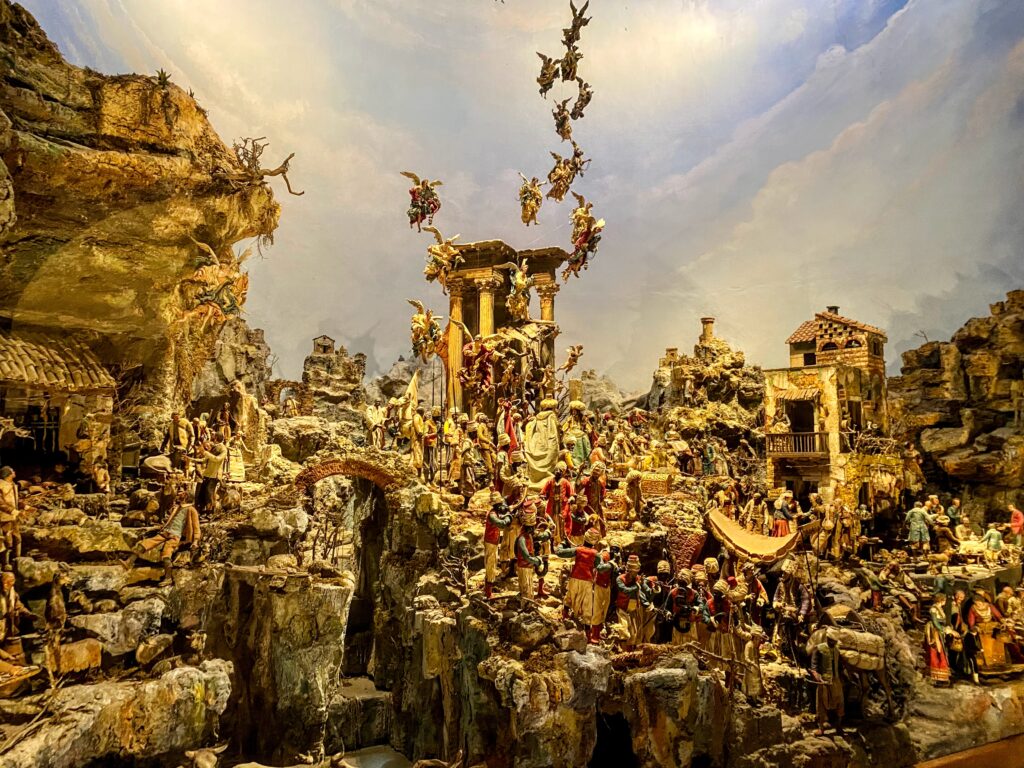
The most famous Neapolitan presepe is the “Presepe Cuciniello”, which is located in the Carthusian monastery of San Martino. The presepe, which can still be visited today, owes its name to the architect, playwright and great collector of presepe figurines Michele Cuciniello (1823- 1889). It was he, in fact, who donated the approximately 800 valuable pieces that make up the presepe in 18th-century style.
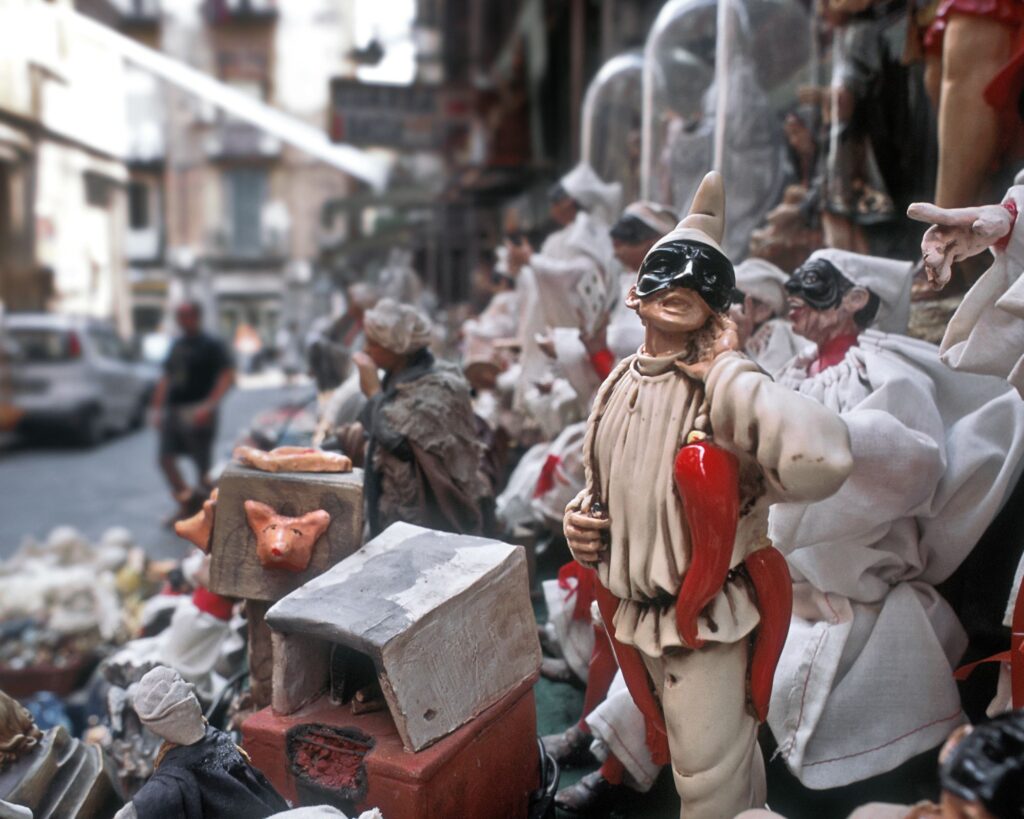
Today, the Neapolitan presepe is known for its elaborate and intricate design. It is typically made up of a series of small, hand-carved figures, depicting various characters from the Nativity story, such as Mary, Joseph, and the baby Jesus, as well as shepherds, kings, and animals. These figures are placed in a detailed, miniature replica of a typical Neapolitan village, complete with streets, houses, and shops.
One of the most unique aspects of the Neapolitan presepe is its use of real people as figures. Instead of using traditional figurines, many presepe creators will use members of their own families or friends as the characters in the scene. This adds a personal touch to the presepe, and makes it even more special to those who view it.
In addition to the figures and the village, the Neapolitan presepe also includes dinamyc elements that help bring the scene to life. These may include a running water feature, smoke from chimneys, and even music and lights. All of these elements combine to create a truly immersive and magical experience for those who view the presepe.
The Neapolitan presepe is a beloved tradition that is enjoyed by people of all ages. It is a beautiful and unique way to celebrate the holiday season, and is a must-see for anyone visiting Naples during the Christmas season. Whether you are a devout Catholic, a lover of art and culture, or simply someone who appreciates the beauty and magic of the season, the Neapolitan presepe is a truly special and unforgettable experience.
San Gregorio Armeno is a small street located in the heart of Naples, Italy. It is known for its artisanal workshops that produce hand-crafted figurines of religious and historical figures.
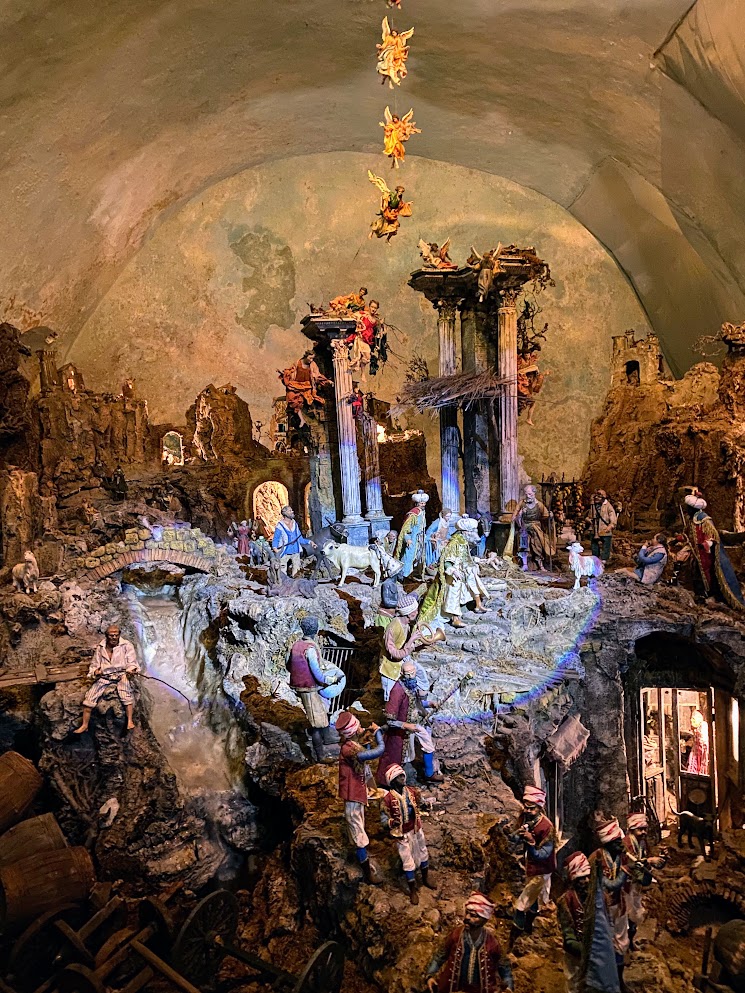
a nativity scene in a cellar in San Gregorio Armeno
Every year, during the Christmas season, the street transforms into a festive wonderland as artisans display their creations in the storefronts. From life-sized nativity scenes to intricately detailed figurines, there is something for everyone to admire.
Most of the artisan workshops devoted to the creation of nativity scenes and figurines are in the street of San Gregorio Armeno, which connects the lower decumanus, also called “Spaccanapoli,” and the greater decumanus, “Via dei Tribunali”
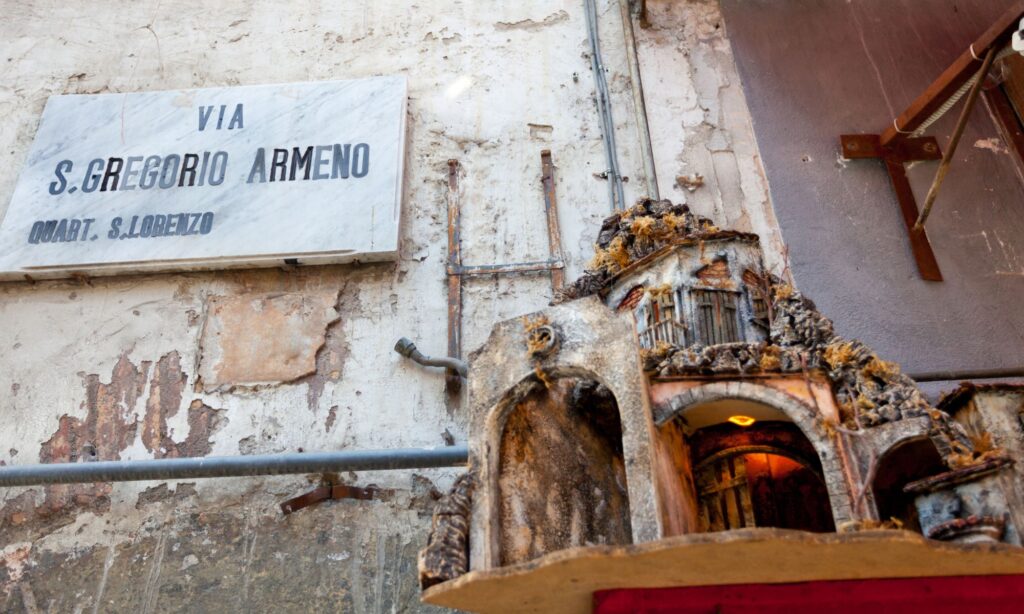
The nativity tradition in San Gregorio Armeno has a remote origin: in the street in classical times there was a temple dedicated to Ceres, to whom the citizens offered as votive offerings small terracotta figurines, made in nearby workshops.
Today, the workshops of San Gregorio Armeno are run by skilled artisans who carry on the centuries-old tradition. They use a variety of materials, including wood, clay, and wax, to create their intricate pieces. Each figurine is carefully crafted by hand, resulting in unique and one-of-a-kind creations.

The nativity scene does not have to be historically accurate and the artisans also create figurines of historical and contemporary figures such as celebrities, football players, politicians and singers.
Visiting San Gregorio Armeno during the Christmas season is a must-do for anyone visiting Naples. The festive atmosphere and the beautifully crafted figurines are sure to put you in the holiday spirit.
Aside from the artisans’ workshops, there are also several souvenir shops and cafes on the street. You can grab a coffee or a snack while browsing the various figurines on display.
In recent years, San Gregorio Armeno has become a popular destination for tourists from all over the world. However, despite its popularity, the street still maintains its authentic charm and tradition.
The Neapolitan presepe takes a crucial role in the play “Natale in Casa Cupiello,” by the great Neapolitan author Eduardo De Filippo, where it is at the center of symbolic generational clash.
-Do you like it?
asks the proud father.
-No
The rebellious son replies.
The presepe as cultural value
The Presepe tradition is not only an important part of Christmas celebrations in Italy, but it also holds significant cultural and artistic value. Many Italian artisans create Presepi as a form of artistic expression, and there are even competitions and exhibitions dedicated to showcasing the most beautiful and intricate Presepe.
In recent years, the Presepe tradition has also been embraced by Italian immigrants and their descendants, who often incorporate the Nativity Scene into their own Christmas traditions in their new countries.
The Presepe tradition is a beloved and enduring part of Italian culture, bringing the story of the birth of Jesus to life and adding a touch of beauty and joy to the holiday season


